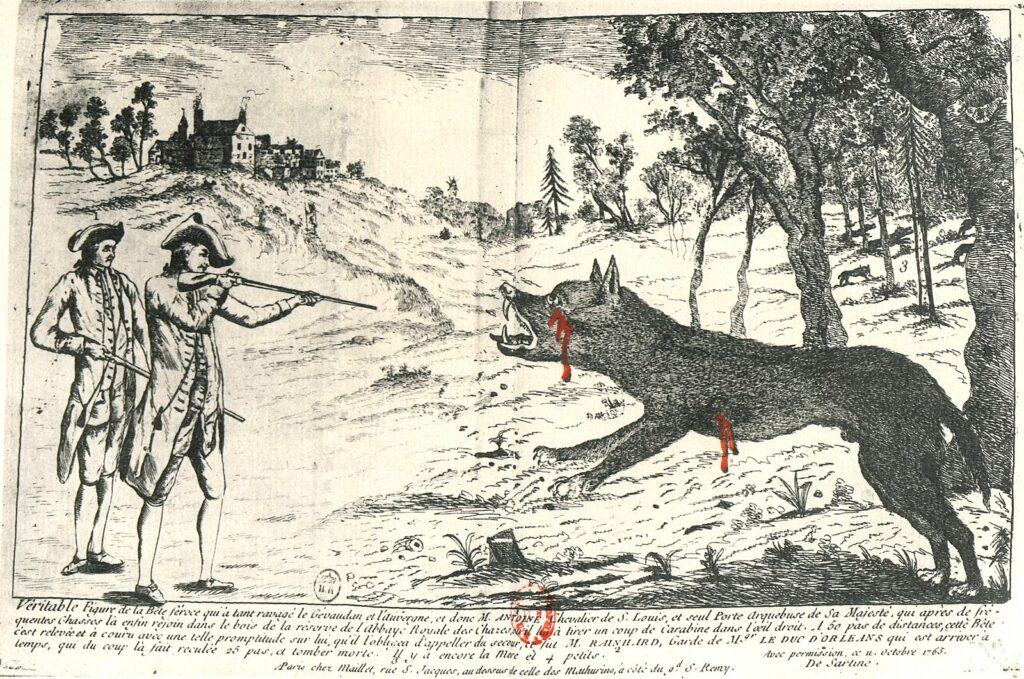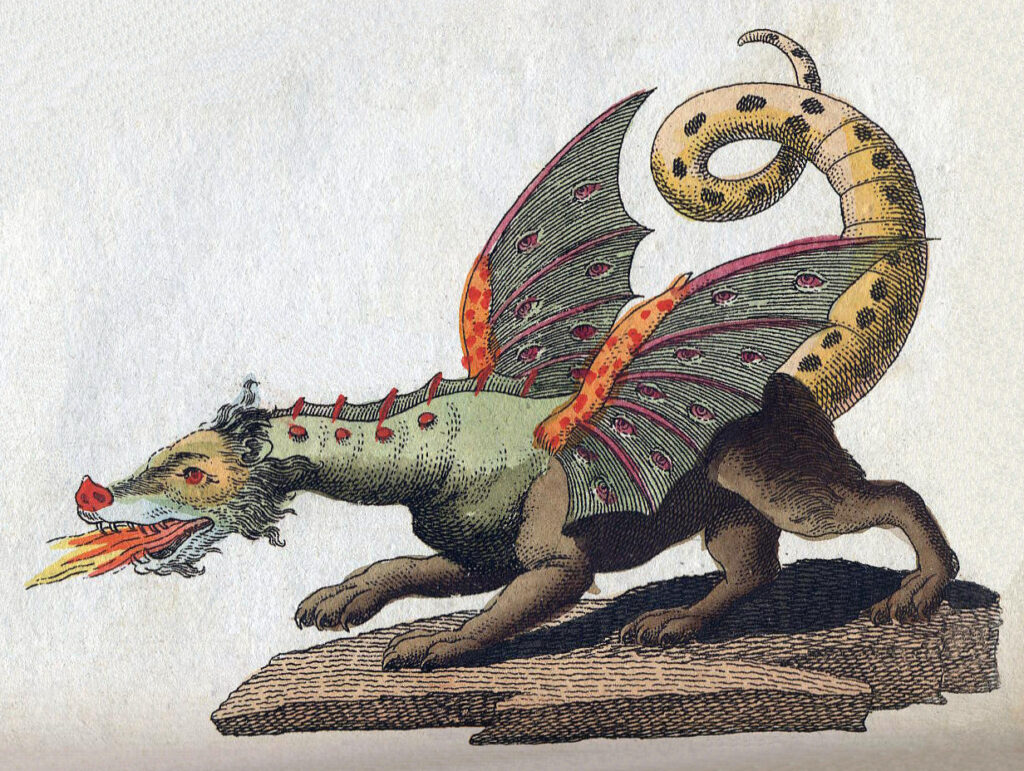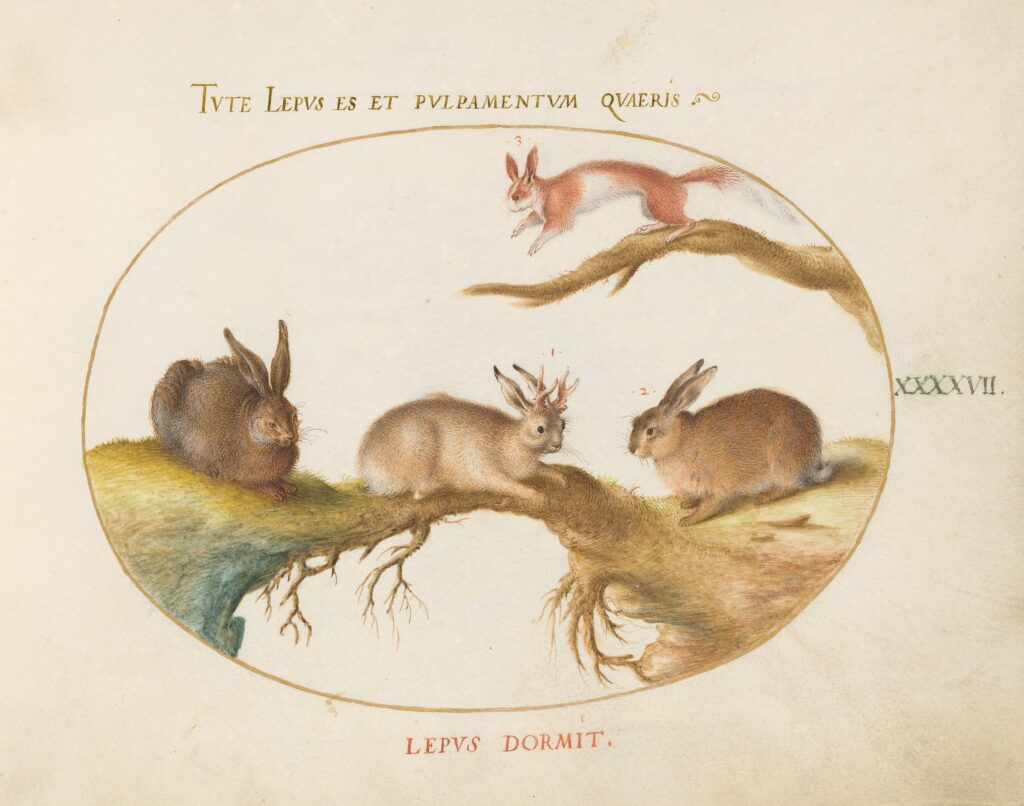You may have read about Arthur Conan Doyle’s fictional monstrous hound in the famous Sherlock Holmes story titled, “The Hound of the Baskervilles.” But in the 18th century, a real-life bloodthirsty beast terrorized Gévaudan, an ancient Southern French county that today lies in the Department of Lozère.
Known as La Bête du Gévaudan or the beast of Gévaudan, it killed more than 100 people during its three-year reign of terror from 1764 to 1767. Learn more about this horrifying beast here.

The Beast’s First Victims
On the 30th of June, 1764, the beast claimed its first victim, a young girl named Jeanne Boulet who was only 14 years old. She was looking after her sheep when it attacked and killed her near Saint-Étienne-de-Lugdarès, a village in Gévaudan.
The local parish register reported her death, not knowing that she would be the first of many victims to fall into the beast’s hands.
A couple of months before this fatal attack, Marie Jeanne Valet, a woman who was tending cattle, had a similar encounter with the mysterious wolf-like beast. Fortunately, her herd of bulls charged and drove off the beast. This allowed her to escape.
The second reported victim was another girl aged 15 years. She was killed a month later near Puylaurent.
On September 8, 1762, the beast claimed its third victim — a young shepherd who went missing near Laval. This was a village in the province of Dauphiné. Only his partially eaten remains were found.
The death toll continued to rise during the following summer and autumn. Moreover, the barbarity of the deaths terrified people. The ferocious beast did not seem to kill its victims for food. Rather, it violently mangled their corpses, causing pain and only partially eating them.
The beast of Gévaudan mostly attacked women and children. But it also targeted men who were out on their own. The large number of attacks made some people speculate that there was more than one beast.
The Hunt for the Beast Begins
Soon, offers of bounties were made and hunters scoured the countryside searching for the beast of Gévaudan.
On the 8th of October, 1764, a few hours after an attack, people spotted the creature going after a herdsman at Chateau de la Baume. Hunters chased it into the woods of the estate and brought it out into the open.
They then fired their muskets at the animal, but it only fell, rose, and immediately fled.

King Louis XV Gets Involved
Children also had terrifying confrontations with the beast of Gévaudan.
On the 12th of January, 1765, the creature charged toward Jacques Portefaix, aged 10, and his seven friends whose ages ranged from eight to 12. But the children bravely fought it off with sticks, eventually driving it away.
Upon hearing the news, King Louis XV rewarded them for their bravery and funded Portefaix’s education. Soon after this incident, Louis XV sent hunters to kill the animal and offered a 6,000-livre bounty for it.
Meanwhile, the beast’s tale spread like wildfire. Many European and American newspapers shared its horrific stories. This made the beast of Gévaudan a media sensation.
On August 11, 1765, the beast attacked a young woman named Marie-Jeanne Valet as she and her sister were making their way across the River Desges. Valet quickly took a bayonet attached to a pole and stabbed its chest with the weapon. The beast escaped and Valet became famous as the “Maid of Gévaudan” and the “Amazon.”
The King’s Gunbearer Shoots a Big Wolf
On the 20th of September, 1765, King Louis XV’s 71-year-old gunbearer, Francois Antoine, and his nephew gunned down a big wolf near an abbey at Chazes. They believed it to be the beast. The king rewarded Antoine with money and titles while the animal’s corpse was stuffed and dispatched to the court.
However, in December, reports of animal attacks resurfaced although the behavior of the beast seemed different this time. Earlier, it was scared of cattle, but this time around, it was fearless. It made people think that perhaps another beast was on the loose.
The royal court ignored the reports and insisted that Antoine had shot the beast. But in June 1767, a string of killings made the Marquis d’Apcher, a local nobleman, lead a hunt.
On June 19, Jean Chastel, a local hunter, killed a wolf on Mount Mouchet. The animal’s autopsy showed remains of a human being inside and traits that were unlike a wolf.
Nonetheless, people assumed that it was the beast of Gévaudan. Although they didn’t know what to make of the creature, they doubted that it was a wolf. Meanwhile, the attacks came to an end, restoring peace and quiet in the country.
Reports of the Beast’s Looks and Behavior
Eyewitnesses often described the beast of Gévaudan as a creature that didn’t look like a regular wolf. A few described it as being as large as a horse or a calf. It had a reddish gray coat and a long and tough tail that resembled a panther’s.
In addition, it had a short-haired, deer-colored head and legs. Meanwhile, its back featured a black stripe with taloned feet. Many of its depictions showed it to have wolf-like features.
People also described the creature as an ambush predator that followed its victims and caught them by their throats. Its victims’ bodies usually had wounds on the head and limb. This pattern was found on the decapitated remains of 16 victims. The beast hunted in the mornings and the evenings.
The Unsolved Mystery of the Beast’s Nature
Scientists, historians, and conspiracy theorists have speculated extensively about the beast’s nature. Some thought it was a Eurasian wolf, a lion, or a striped hyena.
Meanwhile, others believed it to be a prehistoric predator, a werewolf, an armored war dog (which probably explained its bullet-proof body), a dog-wolf hybrid, and a human serial killer.
The reason why many hypothesized that the beast was a human being wearing a wolf’s disguise is that most of its victims were decapitated. This was not something that many animals could do.
After all these years, the true nature of the beast is still shrouded in mystery and continues to capture people’s imaginations even centuries after its death.
Sources
https://www.history.com/news/beast-gevaudan-france-theories
https://www.thecollector.com/beast-of-gevaudan/
https://www.forbes.com/sites/davidbressan/2017/06/28/terror-and-geology-the-beast-of-gevaudan/
https://www.smithsonianmag.com/history/beast-gevaudan-terrorized-france-countryside-180963820/

